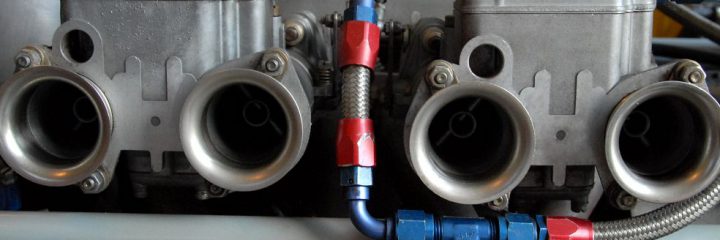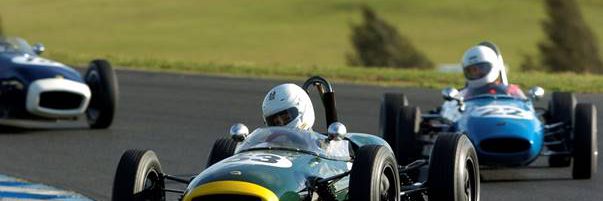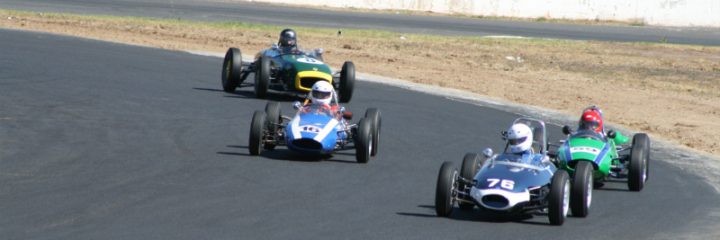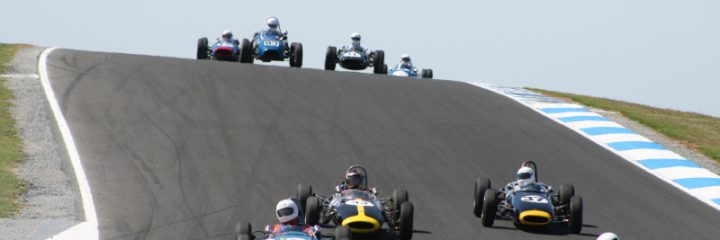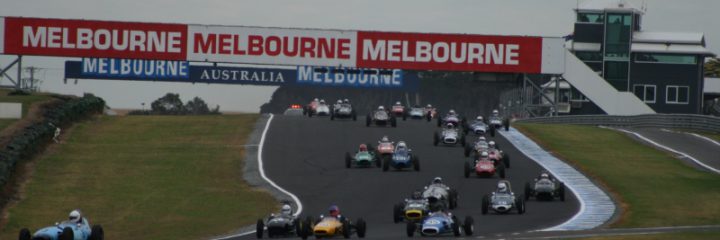History
Formula Junior came from Italy in the mid 1950’s. The A.C. D’Italia was anxious to bring on new drivers to replace the greats like Ascari and Farina. On 20th November 1956 they held a meeting at San Remo to discuss proposals for a new single seater schoolroom class. Count Giovganni ‘Johnny’ Lurani Cernuschi was the eloquent advocate of Formula Junior that used a 1000 cc engine based on production cars then available.
In 1957 Lurani’s proposals were accepted, and Fiat based specials were constructed in Italy. In January 1958 the CSI (Controller of International Motor Sport) appointed a sub-committee to study the National Formula and granted it international status for 1959.
On adopting the formula in October 1958 the CSI (Now FIA) limited engine size to 1000 cc with minimum 360 kg car weight and 1100cc with 400 kg car weight. Other restrictive regulations adapted from the Italian rules were established as the new Formula Junior regulations.
Initially the Italian cars, and in particular the Stanguellini Fiats dominated by winning the Italian championships in 1958 and 1959 and the International championship in its first year with a car driven by Michael May of Switzerland. But by the end of 1959 there were other manufacturers building cars throughout Europe which included Elva, Cooper, Lotus and Lola to name a few.
From 1960 the British built cars totally dominated Formula Junior, particularly the suedo works teams from Lotus with drivers such as Jimmy Clark, Trevor Taylor and Peter Arundel who all progressed through to Formula One with Clark winning two world championships.
Who would have thought that Formula Junior with such a short international life span would make such an impact on the motor racing world and revolutionise Formula One so drastically? During the six years of its existence, racing car design evolved from front engine with ladder style chassis, to the more sophisticated monocoque with rear engine of current design.
It is said there were some 500 odd car manufacturers throughout the world building Formula Junior and that it spawned many specialist industries in racing car development such as Cosworth and Hewland who are well known in their field of expertise today.
Formula Junior was replaced by Formula two and three in 1964 and Formula Ford in the late sixties, all of which still exist today. During 1960 Formula 2 and 3 were dropped in favour of Formula Junior making it the only doorway to formula one for aspiring drivers some of whom included John Surtees, Denis Hulme, Frank Gardiner to name but a few.
Australian Formula Junior History
Australians were slow to accept the new formula. It was 1960 before these cars emerged racing initially as Formula Libre. As numbers increased in 1961 Formula Junior only events were held predominately in Victoria and NSW. In October 1962 at “Catalina Park”, Frank Matich won the first Australian Championship event in an Australian built Elfin Cosworth. The 1963 championship at Warrick Farm Circuit was won by Leo Geoghegan in his Lotus 22 Ford. The race covered 75 miles with a field of 14 cars.
During the Formula Junior period, Australians imported a range of overseas built cars and these more technically advanced vehicles competed against locally built cars that included one-off specials and professionally built cars like Elfin, Lynx, Nota, Rennmax and Jolus. Australian dealerships for Brabham and Lotus were established and cars often shipped for our summer season of events were purchased by locals and never returned to England.
From 1964 Australian Formula Juniors were re-classified as Australian Formula Two (AF2) and competed as a separate class in composite events which included many modified Formula Juniors with 1500cc engines.
The most unique feature of Formula Junior in Australia was that these were the first cars to enjoy a series of events run to an international formula. Prior to this and since, Australia has opted to run local regulations for local or modified overseas cars.
Australia did endeavour to change International Formula Junior rules during 1960-1961. One of the changes included the ability to use up to 1500cc engines, which had this been accepted by Australian competitors, would have resulted in a 300lb weight penalty for the car, and consequently they were never seriously used.
For a comprehensive list of car grids dating from 1960 – 1963, please click on the link below













